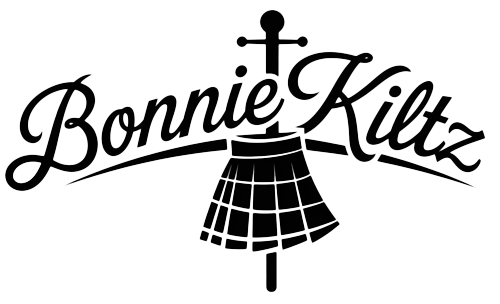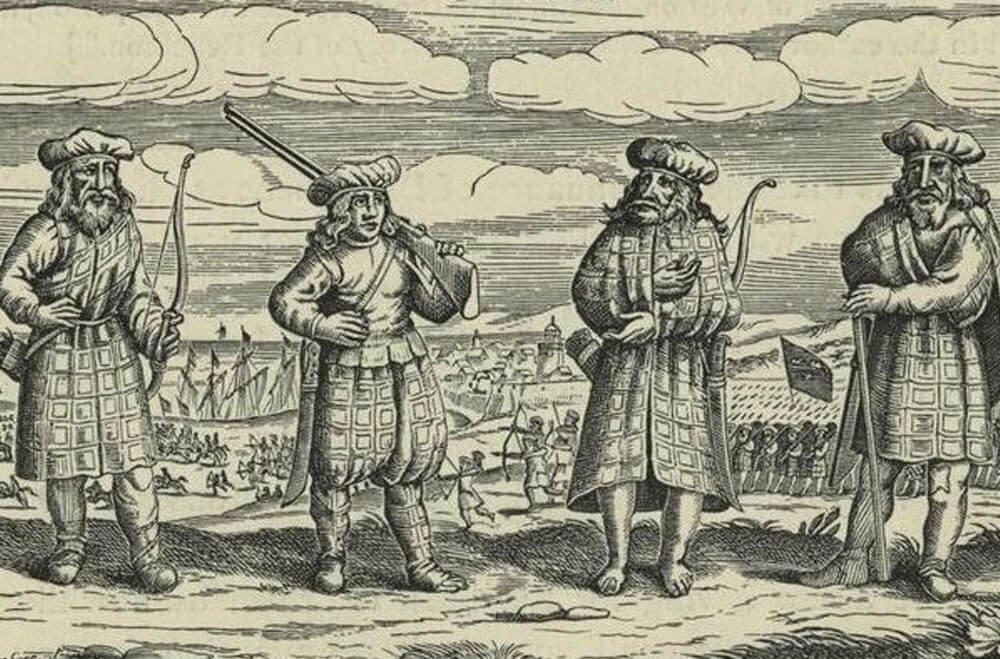The kilt is perhaps one of the most recognizable symbols of Scottish culture and heritage. It is a garment steeped in history, having evolved from a practical piece of Highland clothing into a timeless representation of national pride. Its distinctive tartan patterns, deep historical roots, and the myths that surround it have made the kilt an iconic piece of clothing not just in Scotland, but globally. However, the history of the kilt is far more complex than many realize. From its beginnings as a simple, functional garment to its symbolism in rebellion and cultural revival, the kilt’s journey is one of transformation and resilience. In this article, we’ll explore how the kilt became the powerful cultural emblem it is today, delving into its origins, evolution, and modern significance.

1. Early Origins of the Kilt: From Utility to Identity
The origins of the kilt can be traced back to the rugged Highlands of Scotland in the 16th century. Before the kilt, Highlanders wore garments like the léine, a long tunic worn by both men and women, which was often paired with a large woolen cloak called the breacan or plaid. These garments were practical, offering warmth in the harsh Scottish climate and flexibility for the rough terrain. As the need for more versatile clothing grew, the Feileadh Mòr (Great Kilt) emerged. The Great Kilt was essentially a large piece of tartan fabric, about five to six yards in length, that was belted around the waist and draped over the shoulder. It served not only as clothing but could also double as a blanket, making it indispensable in the Highland lifestyle.
The tartan patterns woven into these kilts were initially regional, linked to specific areas rather than clans. Each community wove its own distinctive patterns using local dyes, but the association of tartans with specific clans didn’t become common until much later. The Great Kilt was both practical and functional, with its design adapting to the daily needs of Highlanders. Its versatility allowed for ease of movement, making it suitable for the Highland warrior’s way of life. This piece of clothing was a true reflection of the harsh conditions and unique way of life in the Scottish Highlands.
2. The Transition to the Modern Kilt: A Shift in Style
The transformation from the Great Kilt to the more familiar Small Kilt (or Feileadh Beag) occurred during the early 18th century. The Small Kilt, which resembles today’s modern kilt, was a more tailored version that separated the lower garment from the upper draped portion. This change was likely influenced by the increasing contact with lowland Scots and Englishmen, who wore more structured and fitted clothing. Unlike the large Great Kilt, the Small Kilt was purely a waist-to-knee garment, making it more practical for everyday use, especially for laborers and soldiers.
One of the key moments in the kilt’s evolution was its adoption by Scottish Highland regiments in the British army. The Highland soldiers wore kilts as part of their military attire, helping to solidify the garment as an essential aspect of Highland dress. These regiments not only popularized the kilt in military circles but also helped it transition from a functional Highland garment to a symbol of Scottish identity. The kilt became more refined, with pleating added to the back for aesthetic appeal and ease of movement. This design further cemented the kilt’s reputation as a symbol of both martial pride and national heritage.
3. The Jacobite Rebellions and the Kilt’s Symbolic Role
The kilt became deeply entwined with Scottish nationalism during the Jacobite Rebellions of the 18th century. The Jacobite forces, composed primarily of Highland clans loyal to the exiled Stuart monarchy, wore kilts as a mark of their Highland identity. The rebellions sought to restore the Stuarts to the British throne, and the kilt became a symbol of defiance against British rule. However, the defeat of the Jacobite’s at the Battle of Culloden in 1746 led to a harsh crackdown on Highland culture.
In an effort to suppress future uprisings, the British government enacted the Dress Act of 1746, which banned the wearing of “Highland dress,” including kilts and tartans, outside of military service. This law remained in effect for nearly 40 years, severely restricting the display of Highland identity. The ban represented a deliberate attempt to dismantle the culture and traditions of the Highland clans, whose loyalty to the Stuart cause had been perceived as a threat. Despite the repression, the kilt never fully disappeared, as Highland regiments continued to wear it, ensuring that the tradition lived on, albeit under strict military regulations.

4. Revival of the Kilt in the 19th Century: Romanticism and Rebirth
The 19th century saw a remarkable revival of the kilt, largely spurred by the Romantic movement, which idealized Scotland’s rugged landscapes and ancient traditions. Writers like Sir Walter Scott played a pivotal role in this revival, painting a romanticized picture of the Highlands and their customs. Scott’s 1822 orchestration of King George IV’s visit to Scotland was particularly significant. For the occasion, Scott encouraged Highlanders to wear kilts and tartans, effectively reintroducing the garment to a broader audience.
This event marked the beginning of a cultural reawakening in Scotland, where the kilt became more than just Highland dress—it became the national dress of all Scots. During this period, the idea of clan-specific tartans also gained popularity, although the historical accuracy of this practice is debatable. The commercialization of tartans in the Victorian era led to the creation of patterns for many clans, giving rise to the notion that each family had its own distinct tartan. This period cemented the kilt’s place not only in Scottish tradition but also in global culture, as the garment was increasingly worn for ceremonial purposes, fashion, and as a marker of heritage.
5. The Kilt in Modern Times: A Symbol of Tradition and Fashion
In contemporary times, the kilt continues to serve as a powerful symbol of Scottish pride and tradition. It is worn at formal events, such as weddings, graduations, and national celebrations like St. Andrew’s Day and Hogmanay. The kilt’s enduring presence at the Highland Games, as well as in Scottish regiments, maintains its connection to both sport and military heritage.
However, the kilt is not just a relic of the past—it has also adapted to modern fashion trends. Utility kilts, made from materials like denim or leather, have become popular among younger generations and are often worn casually. The kilt’s ability to evolve with the times while maintaining its historical significance speaks to its timeless appeal. Whether worn traditionally or in contemporary styles, the kilt remains a testament to the resilience of Scottish culture.
Conclusion: The Kilt as an Enduring Symbol of Scottish Heritage
From its practical beginnings in the Highlands to its current status as a symbol of national pride, the kilt’s history is as rich and varied as Scotland itself. It has survived centuries of change, suppression, and revival to become a beloved emblem of Scottish identity. Whether worn during rebellion, celebration, or everyday life, the kilt carries with it a sense of history, pride, and tradition that continues to resonate in modern times. Its story is one of adaptation and survival, much like the people of Scotland who have worn it for generations. As the kilt endures, it serves as a reminder of Scotland’s unique heritage and the enduring power of cultural identity.

Frequently Asked Questions about the Kilt
A kilt is a knee-length skirt-like garment with pleats at the back, traditionally made of tartan fabric. It is associated with Scottish culture and is typically worn by men, although women also wear kilts today. The kilt is often accompanied by various accessories, such as sporrans, belts, and hose.
The kilt originated in the Scottish Highlands during the 16th century. The early form, known as the Feileadh Mòr (Great Kilt), was a large piece of fabric that could be worn in various ways, including as a blanket. Over time, it evolved into the more fitted Feileadh Beag (Small Kilt), which resembles the modern kilt.
Tartan patterns are traditionally associated with specific Scottish clans or regions. Each clan has its own unique tartan design, which often incorporates specific colors and patterns. Tartan symbolizes heritage, identity, and belonging to a particular clan or family.
Kilts are typically worn for formal occasions such as weddings, graduations, and cultural celebrations. They are also commonly worn during Highland Games and other traditional events. While traditionally associated with formal wear, kilts are increasingly worn in casual settings and everyday life.
While kilts have historically been worn by men, women also wear kilts today. Women’s kilts may have different styles and designs, but they maintain the same cultural significance. Many women also wear tartan skirts that resemble traditional kilts.
While kilts have historically been worn by men, women also wear kilts today. Women’s kilts may have different styles and designs, but they maintain the same cultural significance. Many women also wear tartan skirts that resemble traditional kilts.

